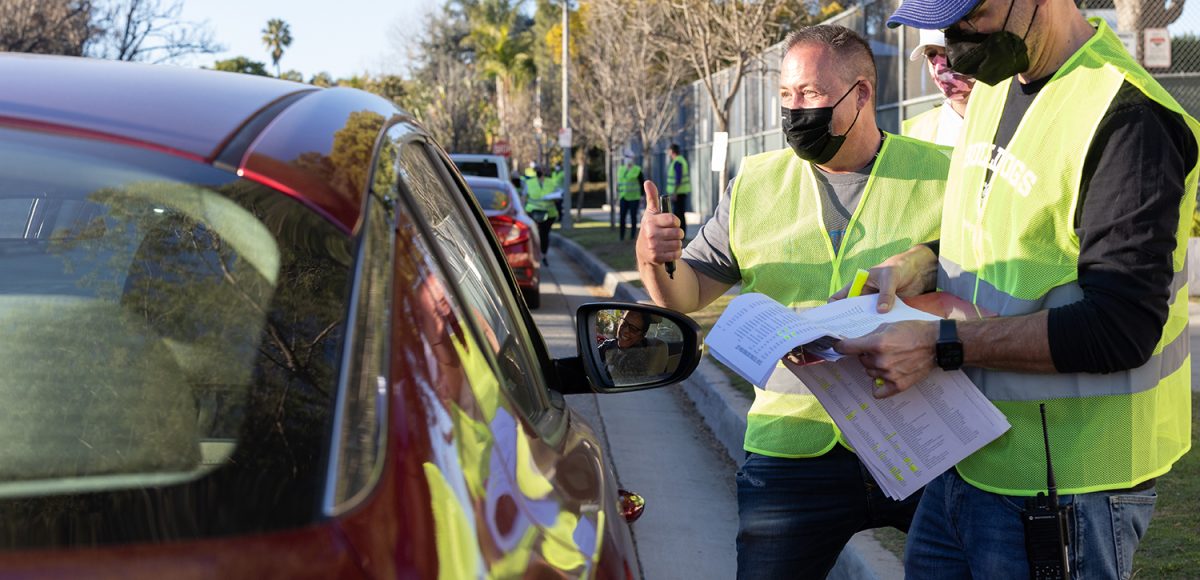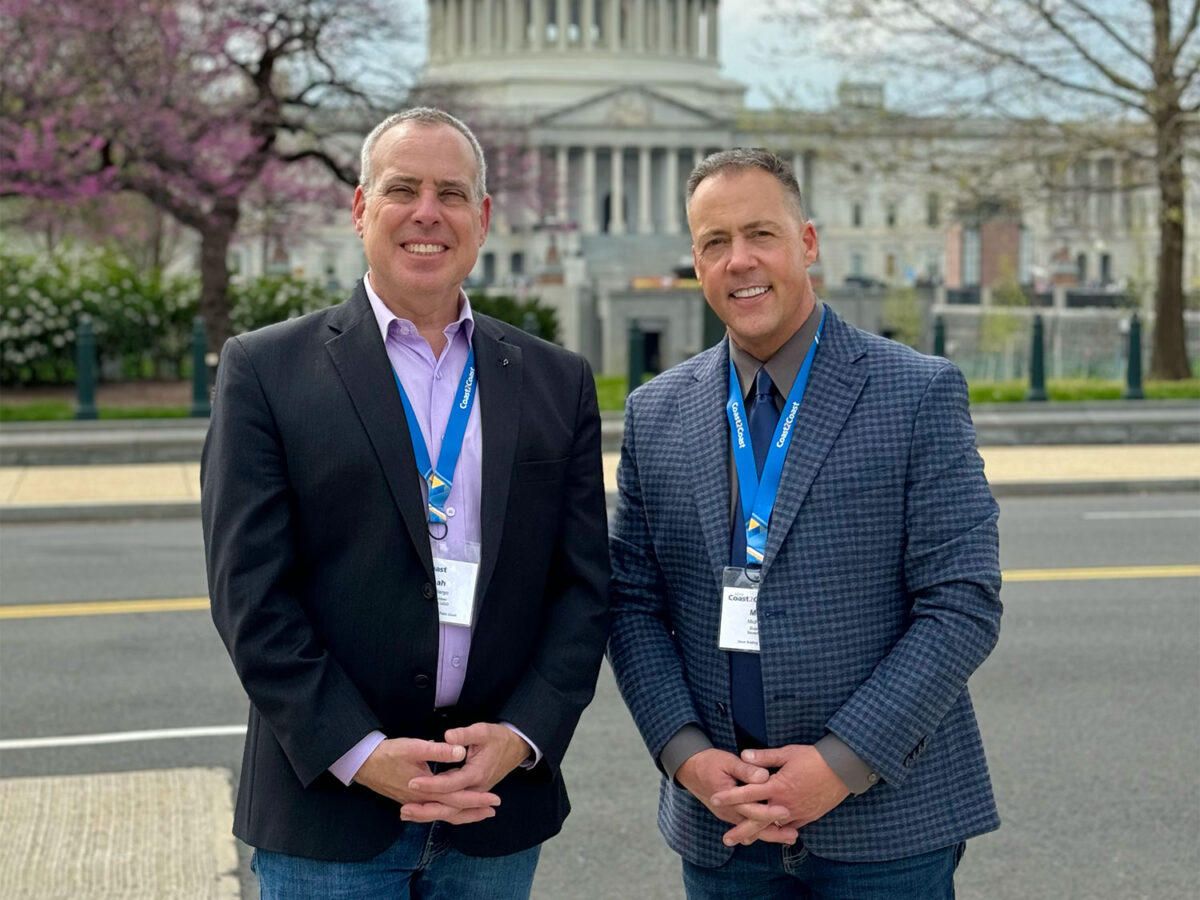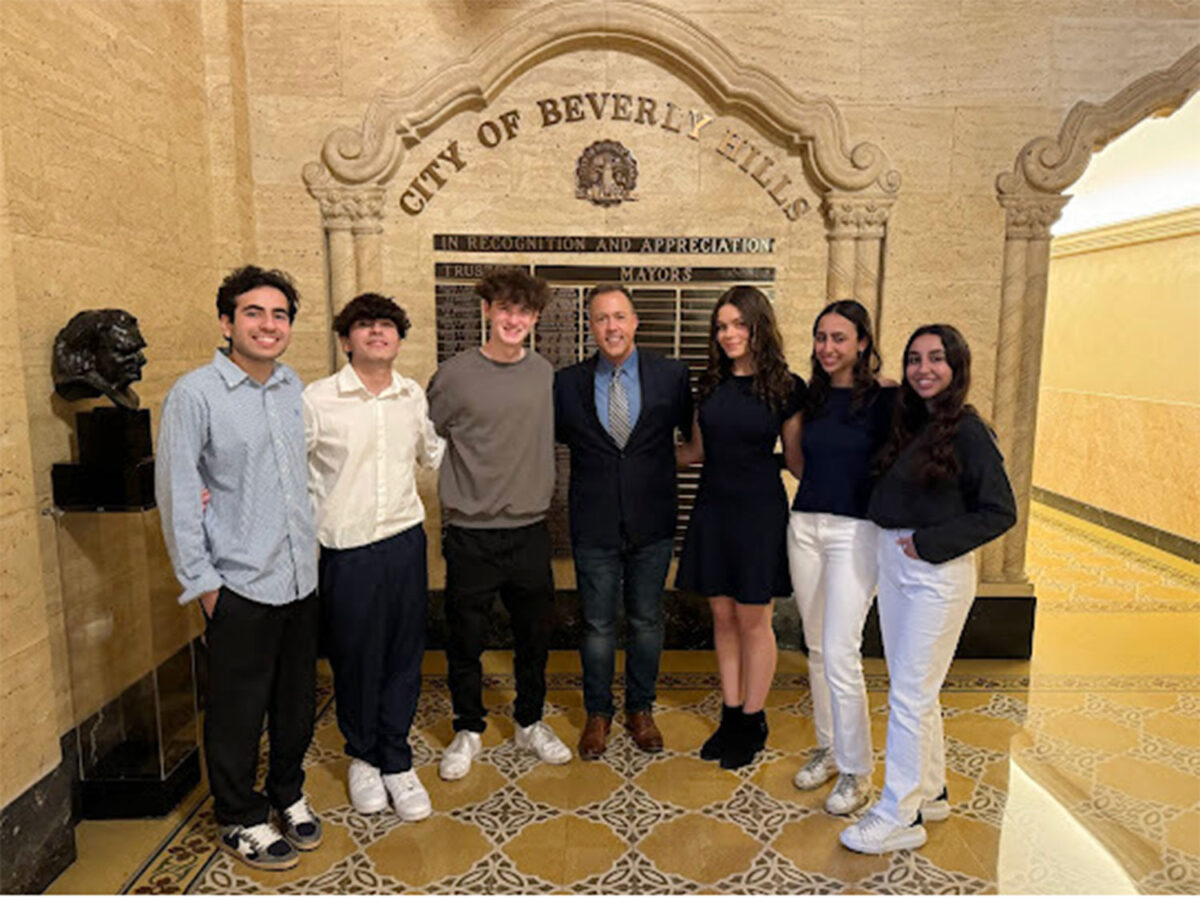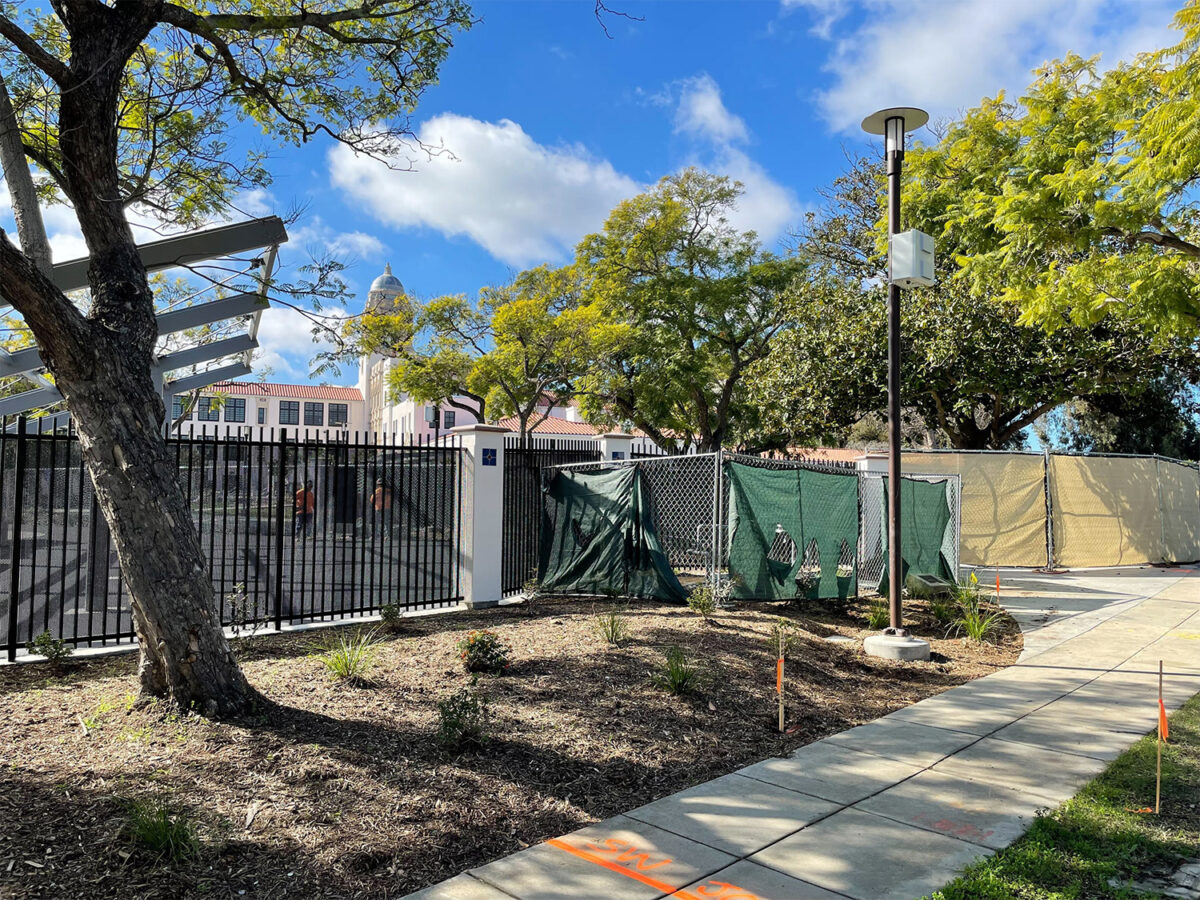Two weeks into the second semester, the Beverly Hills Unified School District’s (BHUSD) mass COVID-19 testing plan is undergoing its own stress test. After beginning the new year on Jan. 10 with a few positive daily cases, approximately 60 students are now testing positive for the virus each day. This week, district administrators are optimistic, predicting an average of 21 cases a day. With many students absent and falling behind, many parents called on the BHUSD Board of Education at its Jan. 18 meeting to institute a more data-driven response to the pandemic. The board agreed to hold a Town Hall for parents, educators, and medical professionals as well as a Study Session scheduled for Jan. 25 at 5 p.m. in an ongoing effort to keep students in classrooms and classrooms open.
Related Story: BHUSD Sees Outbreak as County Cases Surge
“When we had three cases in a day at one school, it literally is 12 to 15 hours of work for the administration to do the contact tracing, to get students tested, to send out emails, to make phone calls, and to then document the data,” BHUSD Superintendent Dr. Michael Bregy said during the Jan. 18 meeting. “And that’s when there were two to three cases a day. Now, we’re averaging about 60 cases a day and we have the same staff to do that.”
In a Jan. 21 email, Bregy reported that positive test results from new cases decreased from last week to this week by approximately 71% at the high school and decreased by approximately 68% at Hawthorne Elementary. Still, while the district’s positive COVID-19 case rate remains a concern for school staff, Dr. Bregy told the Courier the district is not short on tests. Early on, the district partnered with two outside COVID-19 testing companies to help school administrators manage a case surge. “BHUSD is fortunate to be in a position where staff shortages are significant but not yet impeding us from performing the functions necessary to run our schools,” Bregy told the Courier.
According to Bregy, the administration’s priority is to remove students who test positive for COVID-19 from the school environment to avoid any transmission in the classroom or at lunch. “We are still contact tracing,” he said. “It’s really important that we do that. We are struggling with the sheer numbers, but we do believe that getting that information, especially if it is a situation where there has been an exposure to another student, that we do inform families, that we provide that testing.”
In Los Angeles, the COVID-19 vaccine is available for those aged five and up with booster shots recommended for those age 12 and up. According to the Los Angeles County Department of Public Health (Public Health), Pfizer is the only vaccine authorized for those under the age of 18.
Public Health statistics through Jan. 16 indicate that 27.6% of BHUSD students between the ages of five and 11 are fully vaccinated, and 84.4 % of those aged 12-18 are fully vaccinated. While health officials hope to expand vaccine eligibility for children as young as six months old, a sizable cohort of the student population remains unprotected from serious illness from COVID-19.
Currently, the BHUSD Student Testing Program is driven by positive cases. All unvaccinated students are tested for COVID-19 weekly, as well as a random selection of vaccinated students.
Testing is now available at every school site and the District Office every school day between 7:30 am and 4:30 pm.
In anticipation of the high number of tests required, Bregy noted that a minimum of three COVID-19 testers from an outside testing company were added at each school site, in addition to extra staff where there are high close contact counts. “Between elective testing, required testing, close contact testing, and symptomatic testing we are testing on average 1000 people daily with rapid antigen tests,” Bregy told the Courier.
Related Story: Mary Wells Installed as BHUSD Board President
Still, the district is coping with unforeseen staffing shortages and long wait times. On the morning of Jan. 18, student testing was delayed because four members of the testing team tested positive themselves.
The district began the new semester on Jan. 10 amid record-breaking case numbers driven by the highly infectious omicron variant. Over 200 students and 40 staff tested positive for COVID-19 after a district-wide testing day on Jan. 9. Equipped with over 9,000 rapid antigen COVID-19 tests, each of the district’s 3,300 students and roughly 750 staff were tested. The district also distributed tests to household members accompanying students in the same car.
Exposure protocols at BHUSD include five-day quarantine requirements, with close contacts allowed a modified quarantine based on their vaccination status. “Close contact” is defined as 15 cumulative minutes of exposure in a 24-hour time span within 6 feet of someone who has tested positive. Public Health mandates that close contacts be tested on both day 0 and day five.
“We have this opportunity where the testing can occur when you’re a close contact and that could occur at our sites with a quick return back to school,” Bregy said. “This is probably the biggest change since returning in the beginning of the year.”
An asymptomatic and unvaccinated close contact must isolate at home for at least five days, unless they test daily before school until day five. On the fifth day, if they have no symptoms, they may return to school masked (both indoors and outdoors) if they have a negative antigen test administered by the district. The district also instituted a new policy for this current surge whereby the siblings of infected students are assumed to be positive as well and must isolate for the minimum five days. Quarantine for unvaccinated close contacts is now limited to mask-off exposures.
Asymptomatic and unvaccinated infected students are now given the option of a modified quarantine if they test negative and if the exposure took place in the school setting supervised by school staff. According to revised Public Health guidelines updates Jan. 18, the exposed student and the person with a COVID-19 diagnosis must have each worn a mask consistently and correctly during the entire exposure period. Modified Quarantine students can return to all regular activities including sports and extracurricular.
Close contacts that are asymptomatic and fully vaccinated with a booster (if eligible) can return immediately to the classroom if they test negative. However, the district will still test them again on day five.
“If our district gets vaccinated, can we eliminate mass testing,” asked board member Noah Margo. He argued for bold action to “get our kids back to regular learning, because that’s what’s being hurt the most our kids are falling behind. We know that. We have to be realistic about that.”
“I’m always up for a good fight, but to take on the LA County Department of Public Health, we’d be shut down instantly,” Bregy said. “We’ve had a couple of classrooms where we’ve had three or more cases where they’re epidemiologically linked, and that’s never happened before. But it shows how contagious this variant is. And so that’s a county direction then, to shut down these classrooms if that continues, and we’re working really hard so that that doesn’t happen.”
Public Health defines a COVID-19 outbreak as three confirmed cases within a 14-day period of each other in a specified group with members who are epidemiologically linked, do not share a household, and are not a close contact of each other outside of the campus. Per Health Officer Orders, the district is required to report the cluster to Public Health and coordinate a response. “We immediately reported these cases to LACDPH and they explained that the links may have been during eating at lunch,” Bregy told the Courier. “But due to the surge, they are not able to rule out that the students may have been infected from an off-campus source.” According to Bregy, Public Health officials did not conclude the cases were an outbreak and therefore did not recommend an outbreak response plan.
“I believe that as a board, we have not done our job by actually taking a more proactive and active approach towards making policy towards COVID-19 and what we’re seeing,” board member Gabriel Halimi said.
“Beverly Hills is a very special place,” Halimi said, citing access to talented educators, world-class medical professionals, and an actively engaged parent community. “We are not some small town in the middle of the country,” he added. “We are Beverly Hills, and we have some of the best data and the best ability to make decisions and policy out of anybody anywhere.”







